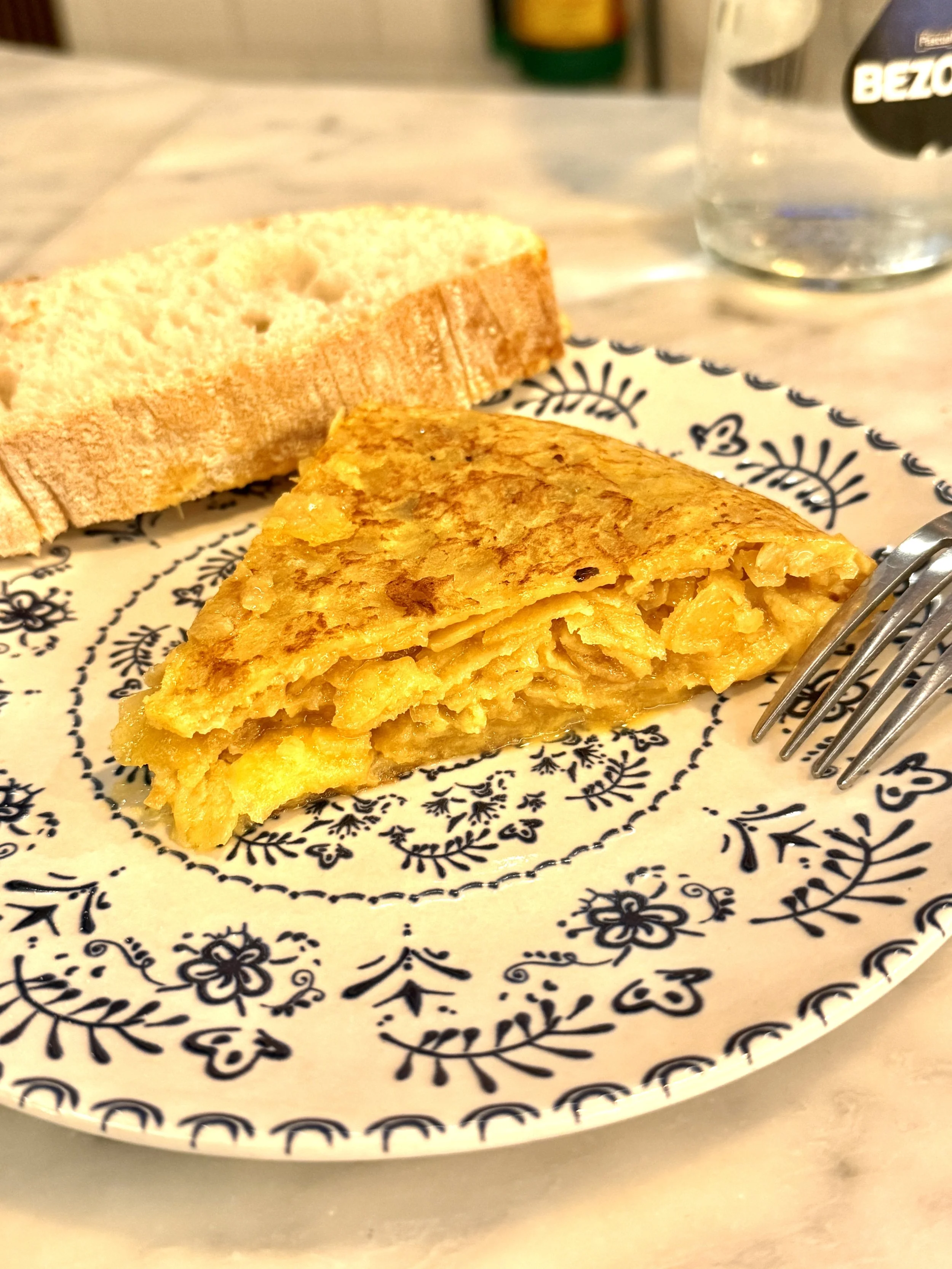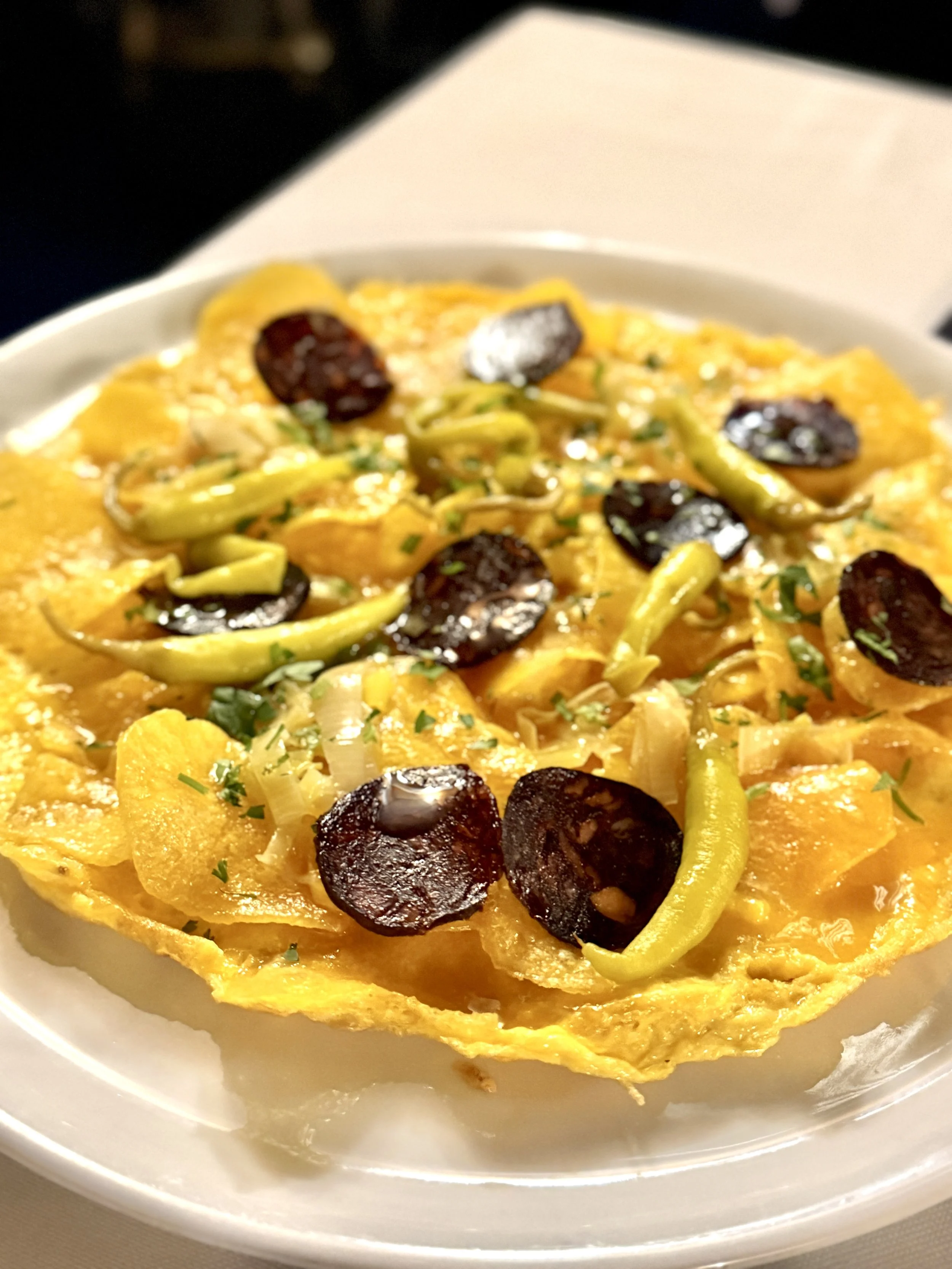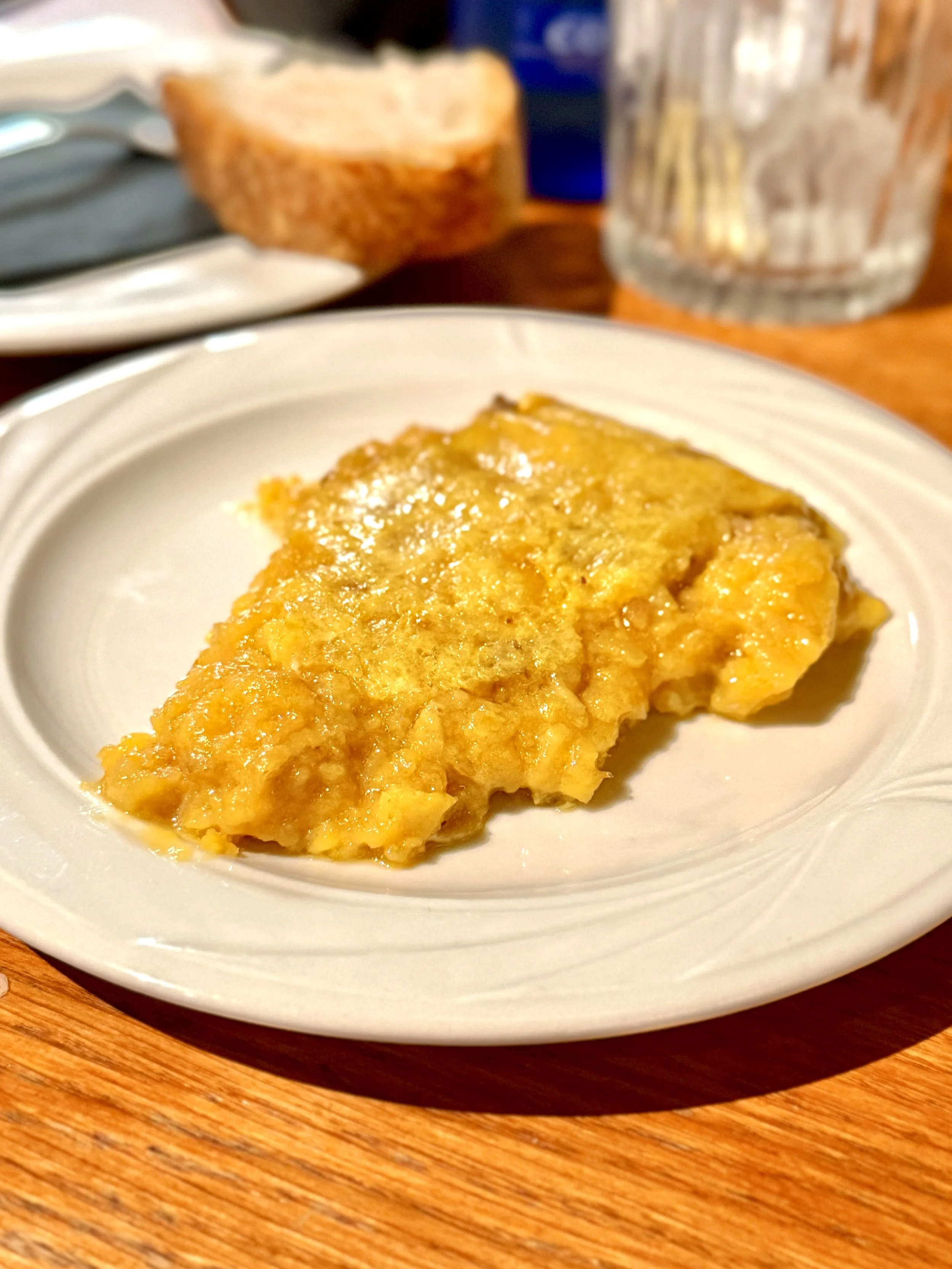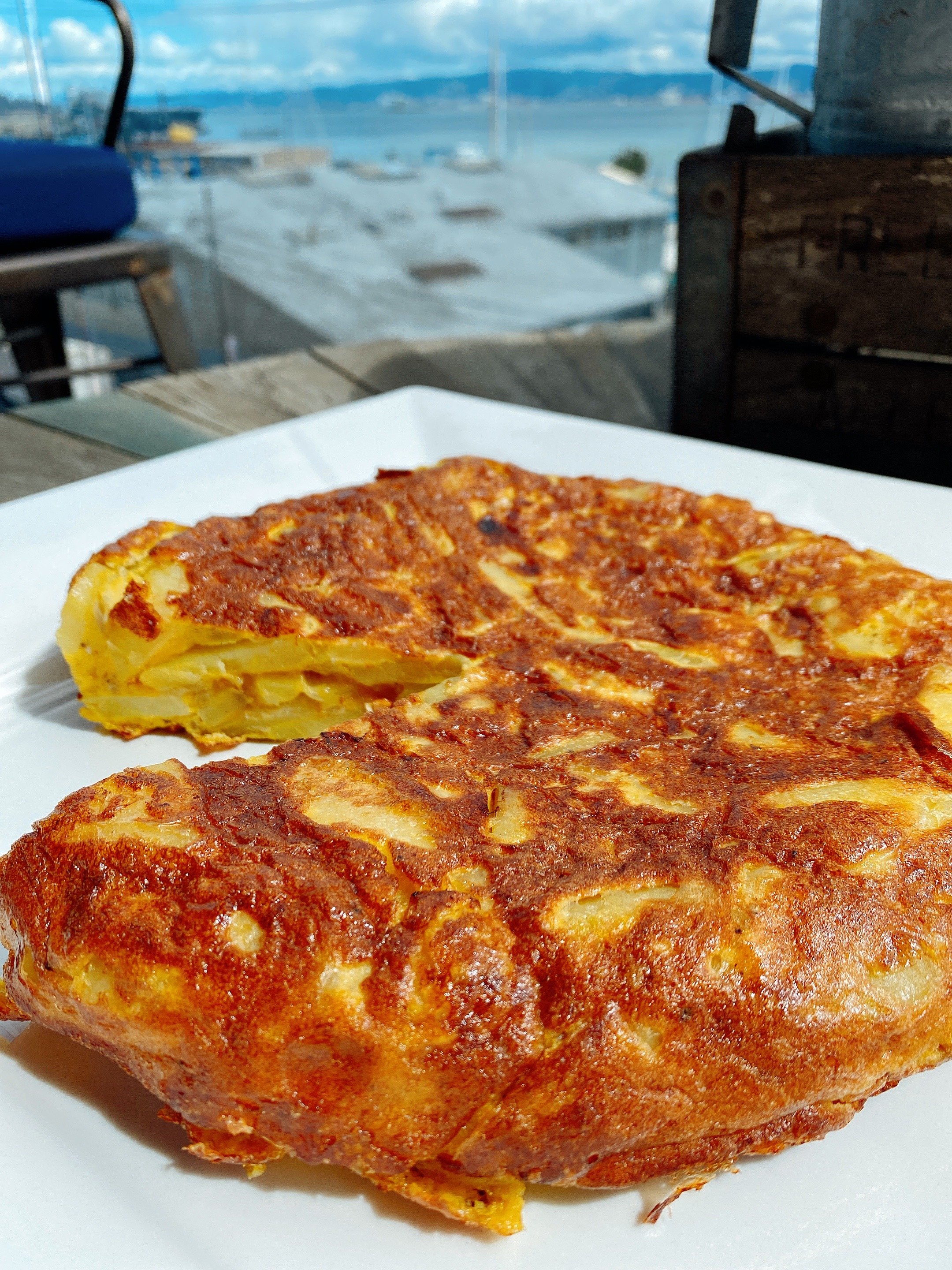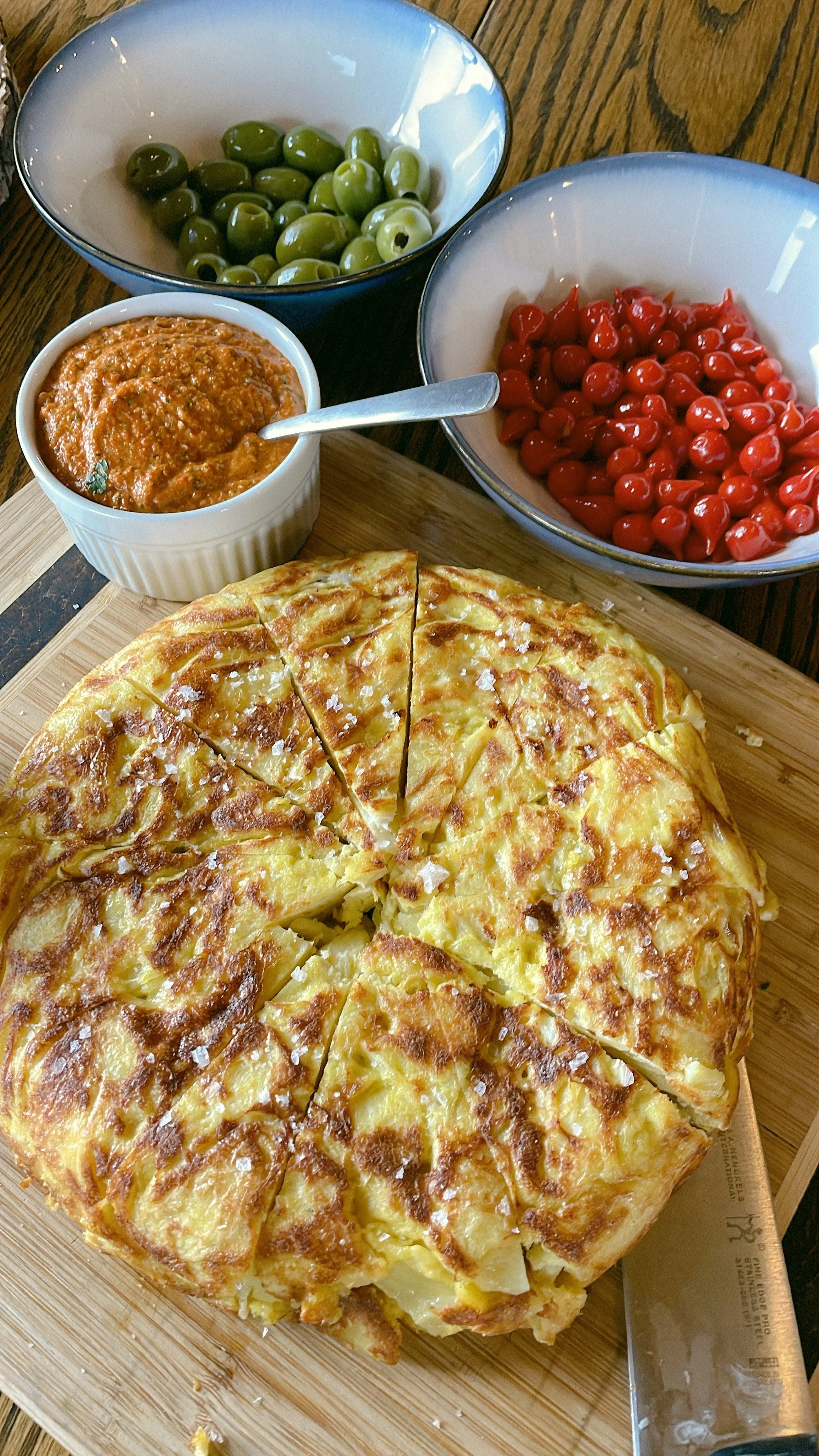Tortilla de Patatas
Where to begin? Let’s start with the fundamental concept that the Spanish tortilla—tortilla española (as it’s known outside Spain) or tortilla de patatas (as it’s known in Spain)—is nothing like a Mexican tortilla, the flour- or corn-based flatbread used for wrapping fillings or cutting into chips. Got it? Good.
A Spanish tortilla is an omelette with potatoes and sometimes onions. From my experience, I’d be comfortable suggesting it’s the national dish of Spain. Others might nominate paella, but I’d argue that paella—while widely available and famous worldwide—is uniquely Valencian. Tortilla, by contrast, can be found cooling on the counters and windowsills of countless homes and bars across the country. It’s Spain’s apple pie.
While the dish is incredibly simple—eggs, oil, potatoes, and often onion—it’s an art form and requires real culinary skill to execute properly. There are variations in thickness, potato shape, doneness, onion inclusion (or not), and resulting flavor. No two tortillas are the same. In the same way pizza always takes on the personality of its maker, tortilla is personal.
I’ve recently leveled up my tortilla knowledge by sampling many of the lauded (and yes, awarded) versions in Madrid. To me, a good tortilla is both structured and loose at the same time. There’s an impossible-seeming emulsion happening—what should be runny, nearly raw eggs become a viscous, rich custard. In Galicia this ultra-juicy take is often associated with Betanzos-style tortilla (typically sin cebolla, no onions). When there are onions, there isn’t a special name beyond con cebolla, but the same emulsion is the key—and a genuine culinary feat.
Most people have encountered a more fully cooked style, which is what I’d been making for decades. Americans are squeamish about undercooked eggs. I used to think it was impossible to achieve the consistency Spaniards adore without risking salmonella. I’ve since learned the science and technique and I’m all-in. (Tip: pasteurized eggs are widely available and remove most of the worry.)
Cooked through, it’s still a deeply satisfying dish—and still near the top of the culinary world. This style is similar to, but not actually, a frittata—let’s be clear. Frittatas are Italian and usually include vegetables; sometimes there’s a potato in the mix. Tortilla, by default, is potatoes mixed into the eggs. American omelettes don’t mix the fillings; they fold them inside a cooked egg flap. French omelettes are just eggs whipped until uniform and silky.
Some restaurants add things to tortilla—cheese, chorizo, truffles—but these always play off the base of potatoes and eggs. I typically stay basic and order the traditional versions. As for the onion debate, Spaniards will die on their respective hills. While I side with the onion crowd, I appreciate the sin cebolla purists for their simplicity.
I first discovered “proper” tortilla where many people do: Casa Dani. Tucked inside the Mercado de la Paz in Salamanca, Madrid, it’s an essential reference point. At first glance the gooey center can spook a sane eater.
But that first bite… a deep, rich mouthful of potatoes, sweet caramelized onion, and lush egginess—perfectly seasoned, perfectly satisfying. It’s a revelation and unlike anything else. Not an omelette, not home fries, not onion jam—yet somehow evocative of all three.
Having sampled dozens of the city’s best, my current favorite is at La Primera on Gran Vía. It’s an upscale yet old-school place that screams “smart Saturday brunch with the family.” The bar slings out slices at a breakneck pace; new rounds appear to keep up. It’s always warm and holds its shape long enough to reach your plate, then collapses under your fork. The mouthfeel is sublime—a melange of flavors from a humble, simple concoction.
Below I’ll share a list of great tortillas in Madrid and a map from a local friend. If you like single-dish deep dives, this is your treasure map. But first, the technique behind making my ideal tortilla.
Skill 1 — The Emulsion
The first trick is to set the eggs into a gooey, rich state before they hit the frying pan. To do this, introduce the hot potatoes, onion, and some of their cooking oil into the beaten eggs (salted). Over the next few minutes, the eggs will gently transform and a batter forms. Skip this and you’ll likely end up with runny slop (unless you cook the tortilla through). To help things along, you can puree a small portion of the potato-onion-oil mix, then fold it back into the rest to thicken the emulsion. Give it 10–15 minutes for the heat to do its work—you’re aiming for an apple-pie-filling consistency.
Extra color: Waxy potatoes (e.g., Yukon Gold/Agria/Monalisa) help keep structure, and many cooks use olive oil for flavor with a touch of neutral oil for temperature control.
Skill 2 — The Flip
If you’ve made tortilla, you’ve met the flip. Halfway through, the tortilla must be turned in its pan—while the top is still quite loose. Since tortillas are sizable (10–12 inches is standard), a spatula or pan toss is a floor-shot waiting to happen. Even the most skilled tossers don’t play chicken with tortilla.
So: master the plate flip. Cover the pan with a plate (or a flat sheet pan or cutting board), invert swiftly but calmly, then slide the tortilla back into the pan. Two small tricks: (1) lightly oil the “lid” so the slide back is frictionless; (2) re-film the pan with a bit of oil before the return. Seal, flip, slide, then use a gentle shake and a rubber spatula to coax the edges. If you’ve prepped properly, it’s far less stressful.


